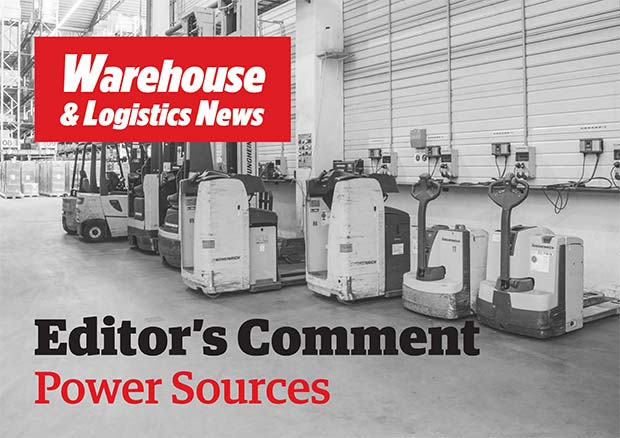Over the last three months of lockdown the supply chain has played a critical role in the management of the Covid-19 crisis. LPG and batteries have kept the forklift trucks and other cargo handling equipment running, which has been essential to supply chains for food, medical services and personal care products. The loss or reduction of the availability of LPG and batteries for these critical applications could prove devastating to health systems, food distribution and logistics networks, and the broader economy in a time of dire need.
This article was first published in the June 15th 2020 issue of Warehouse & Logistics News, subscribe to the magazine by clicking here.
 As lockdown begins to lift and logistics operations prepare to get back to work, rarely has it been more important to pay proper attention to forklift batteries that have been out of action for several weeks. Hoppecke Industrial Batteries is reminding businesses to treat the live wet chemistry in lead-acid batteries with due care when bringing trucks back into use, otherwise capacity could be seriously reduced. Hoppecke is keen to make businesses aware that the sulphuric acid in wet lead-acid batteries (PZS/PZB) is more prone to oxidising when static. This causes sulphate deposits to collect on the plates and, as a consequence, capacity is reduced. Stratification is also likely to occur, as the acid and water separate and settle at different levels, shrinking the battery’s effective use. To help logistics operations to revive their forklift fleets safely after lockdown, Hoppecke has drawn up some simple guidelines. Easy steps commence with a visual inspection and include controlled charging cycles and topping up, where necessary, with deionised water. However, they differ slightly depending on whether batteries have been left on charge over the past few weeks.
As lockdown begins to lift and logistics operations prepare to get back to work, rarely has it been more important to pay proper attention to forklift batteries that have been out of action for several weeks. Hoppecke Industrial Batteries is reminding businesses to treat the live wet chemistry in lead-acid batteries with due care when bringing trucks back into use, otherwise capacity could be seriously reduced. Hoppecke is keen to make businesses aware that the sulphuric acid in wet lead-acid batteries (PZS/PZB) is more prone to oxidising when static. This causes sulphate deposits to collect on the plates and, as a consequence, capacity is reduced. Stratification is also likely to occur, as the acid and water separate and settle at different levels, shrinking the battery’s effective use. To help logistics operations to revive their forklift fleets safely after lockdown, Hoppecke has drawn up some simple guidelines. Easy steps commence with a visual inspection and include controlled charging cycles and topping up, where necessary, with deionised water. However, they differ slightly depending on whether batteries have been left on charge over the past few weeks.
Market intelligence firm Interact Analysis has produced a new report predicting significant continued growth in the forklift truck market, and a move away from lead acid to Li-ion technology in the growing electric truck sector. The report predicts that, post 2020, strong growth will resume, rising from the hundreds of thousands of shipped units in the noughties, to 2.4 million units in 2028. Interact Analysis further estimates that the current 60-40 split between electric and diesel vehicles will widen significantly in the next decade, in favour of electric. By 2028, electrified trucks are predicted to occupy 70% of the market, with Li-ion batteries powering almost 50% of machines.
Lithium-ion batteries are one of the most popular power solutions, with greater productivity and improved total costs being highly beneficial to a range of customers. The lithium-ion solution helps customers optimise their utilisation in multi-shift applications by eliminating the need for replacement batteries and battery change-overs. Space previously used for battery charging can now be used for more productive purposes, such as storage space or production.
Whether powered by LPG or batteries, the fleets of forklift trucks and cargo handling equipment are crucial to the world of warehouses and logistics. The nation can be grateful to the motive power needed to keep it supplied.




Comments are closed.